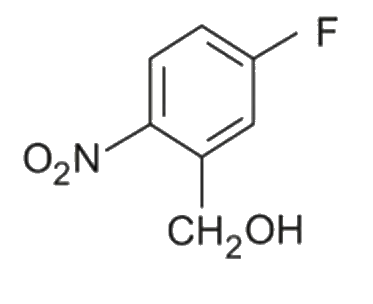What is the compound A in the given reaction :



None
The correct Answer is:A
To determine the compound A in the given reaction, we will follow these steps:
1. Identify the Reactants:
The reaction involves a compound with a fluorine atom (F) and a nitro group (NO2) on an aromatic ring, along with a nucleophile (OH-) from NaOH.
2. Understand the Structure:
The compound has a fluorine atom attached to a carbon in the aromatic ring, with a nitro group in the para position relative to the fluorine. The structure can be represented as:
- F on one carbon
- NO2 on the para carbon
- CH3 on another carbon
3. Analyze the Effects of Substituents:
The nitro group (NO2) exerts both a -R (resonance) effect and a -I (inductive) effect, pulling electron density away from the aromatic ring. This increases the positive character (δ+) on the carbon bonded to fluorine, making it more susceptible to nucleophilic attack.
4. Nucleophilic Attack:
The hydroxide ion (OH-) acts as a nucleophile and attacks the carbon atom that is bonded to the fluorine due to the increased δ+ character. This results in the substitution of the fluorine atom with a hydroxyl group (OH).
5. Formation of Compound A:
After the nucleophilic substitution, the structure of compound A will have the hydroxyl group (OH) in place of the fluorine atom. The final structure can be represented as:
- OH in place of F
- NO2 remains in the para position
- CH3 remains in its position
6. Final Product:
The final compound A can be represented as:
- A = 4-nitro-2-methylphenol (where OH replaces F).
Conclusion:
Thus, the compound A formed in the reaction is 4-nitro-2-methylphenol.
The reaction involves a compound with a fluorine atom (F) and a nitro group (NO2) on an aromatic ring, along with a nucleophile (OH-) from NaOH.
The compound has a fluorine atom attached to a carbon in the aromatic ring, with a nitro group in the para position relative to the fluorine. The structure can be represented as:
- F on one carbon
- NO2 on the para carbon
- CH3 on another carbon
The nitro group (NO2) exerts both a -R (resonance) effect and a -I (inductive) effect, pulling electron density away from the aromatic ring. This increases the positive character (δ+) on the carbon bonded to fluorine, making it more susceptible to nucleophilic attack.
The hydroxide ion (OH-) acts as a nucleophile and attacks the carbon atom that is bonded to the fluorine due to the increased δ+ character. This results in the substitution of the fluorine atom with a hydroxyl group (OH).
After the nucleophilic substitution, the structure of compound A will have the hydroxyl group (OH) in place of the fluorine atom. The final structure can be represented as:
- OH in place of F
- NO2 remains in the para position
- CH3 remains in its position
The final compound A can be represented as:
- A = 4-nitro-2-methylphenol (where OH replaces F).
Thus, the compound A formed in the reaction is 4-nitro-2-methylphenol.
Topper's Solved these Questions
Similar Questions
Knowledge Check
In the given reaction, what is [B]?
 A
A B
B C
C D
D
In the given reaction. what is 'X'?
 AC6H5CHOBC6H5NH2CC6H5CONH2D(C6H5CO)2O
AC6H5CHOBC6H5NH2CC6H5CONH2D(C6H5CO)2OFor the given reaction :

What is 'A' ?A B
B C
C D
D
What would be the products of the given reaction ?

View SolutionArenediazonium ion are weak electrophiles, they react with highly reactive aromatic compounds with phenols and tertiary aryl amines to yeild azo compounds. This electrophilic substitution is often called a diazo coupling reaction.
What is the major product of given reaction?

View SolutionArenediazonium ion are weak electrophiles, they react with highly reactive aromatic compounds with phenols and tertiary aryl amines to yeild azo compounds. This electrophilic substitution is often called a diazo coupling reaction.
What is the major product of given reaction?

View SolutionWhat are A, B and C in the given reaction ?

View SolutionSelect the missing compounds for the given reaction

Identify A,B and C for the above reaction and choose the correct option.
View Solution


